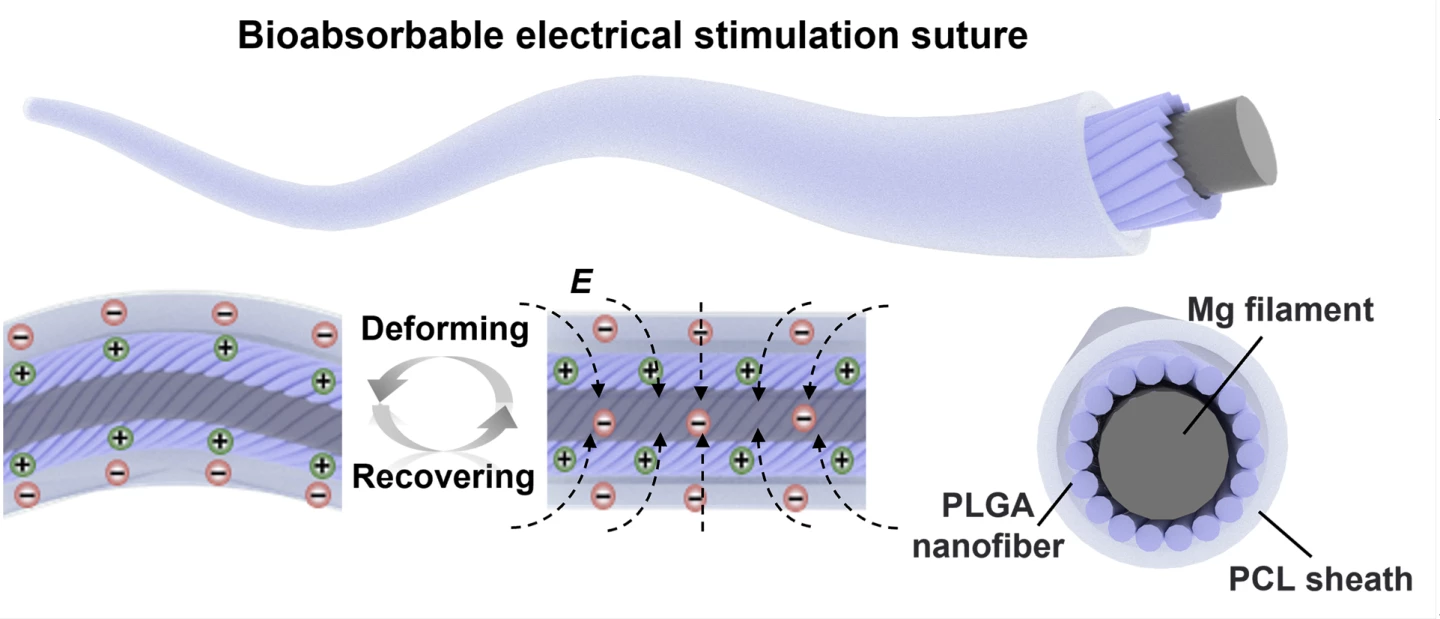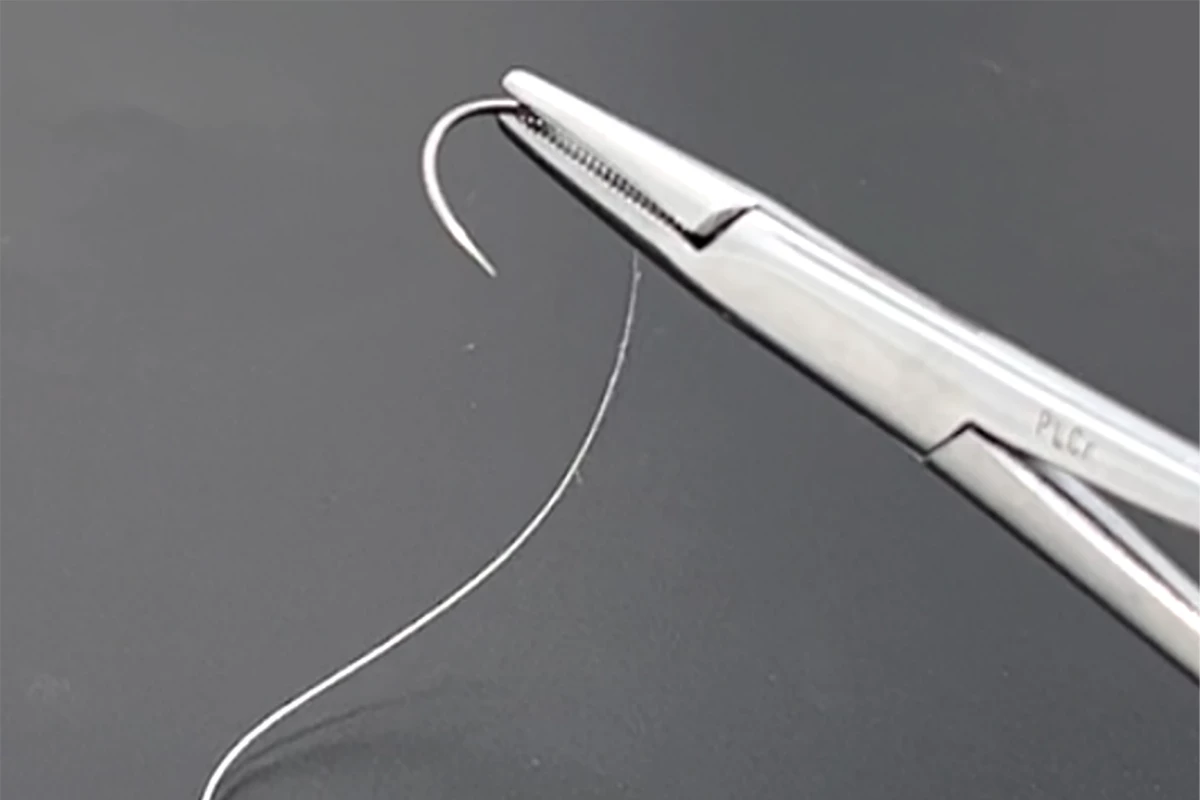Surgical stitches are good for helping wounds heal, but they can pop open with too much movement. Scientists in China have now turned that weakness into a strength, developing stitches that generate an electric charge when stretched and heal wounds faster.
Sutures are the standard treatment for large and deep wounds in skin, physically bringing cells on either side of a wound back in contact so they can patch up the damage. Without them, injuries heal slower, leave larger scars, and run a higher risk of infection.
But they’re not without their own complications. Movement of the affected area can open them up, and they usually need to be removed by doctors after they’ve served their use. In a new study, scientists at Donghua University in China have solved both of those problems.
The new stitches are made with a specialized mechanoelectrical fiber. Essentially, when the core and sheath layers of the fiber touch and separate as a result of movement, they generate electric fields, which in past research has been shown to speed up healing.

The team tested the idea on cell cultures in the lab. A wound that took up 69% of the surface area was reduced to just 10.8% with electrical sutures after 24 hours, while a control group that had regular sutures still covered 32.6% in the same timeframe. The key seems to be that the electric signals speed up the migration of fibroblasts, cells that help build new connective tissue by secreting collagen.
Next, the researchers moved onto rat tests. They found that after 10 days, the electrical sutures had closed the rats’ wounds by 96.5%, while the control sutures had only closed by 60.4% in the same time.
Finally, they tested the infection rates of the electrical and traditional sutures. Whether the wound was disinfected daily or not, the rats treated with electrical sutures showed significantly lower levels of bacteria than those with regular stitches.
Other examples of using electricity to promote wound healing have involved systems of biosensors, batteries and electrical stimulators. But the new one has the advantage of doing it all passively, as the patient moves around.
As a bonus, because the electrical stitches are made of bioabsorbable materials, the team says they should be able to safely degrade in the body. That would save patients the invasiveness of surgical removal.
At this stage, there’s still plenty of work to do to get it ready for testing in humans before it can make its way to clinical use. But it’s an intriguing idea that could eventually help wounds heal faster and more safely.
The research was published in the journal Nature Communications.
Source: Donghua University via Scimex





